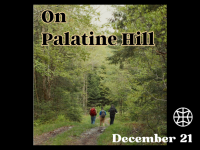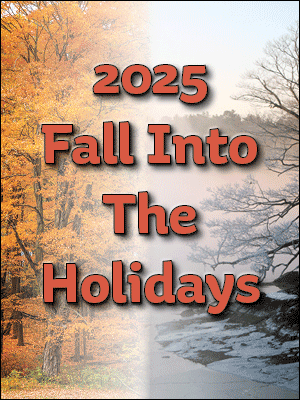Maine’s hidden poison
Introduction
Do you enjoy cooking brook trout from your local river? Chances are, the river of your hometown has been affected by dioxin. This toxic substance can leak into rivers and is known to leave long-lasting effects for human beings. Kerri Arsenault, the author of the 2020 exposé “Mill Town,” establishes a connection between mill towns and cancer. As people of Maine, we should have the ability to eat the food we harvest in our local forests, rivers, and ocean. As citizen students of Maine, we hope to point out the truth of mill towns and dioxin leakage into wildlife, and human beings.
Our Background
We as students of the AP English Language and Composition class at Boothbay Region High School in Boothbay Harbor, Maine have studied this year critical issues of American identity and democracy. Throughout the year, we have been working towards our goal to become informed citizens. Our teacher Mark Gorey has been educating us about current events in the world and urges us to do research to form our own educated opinions. Mr. Gorey in his search to educate his students came across “Mill Town” while at a book signing in Bath, by Ms. Arsenault. This past April, Ms Arsenault Zoomed with our class for an hour, giving us the opportunity to ask her questions after reading her book.
“Mill Town”
Ms. Arsenault’s exposé “Mill Town” informs readers about the harmful effects caused by her hometown’s paper mill in Rumford, Maine. Her journey began by researching her genealogy, including her Acadian ancestry, which revealed that her family’s past intertwined with the paper mill in many ways. As her curiosity grew, others in the town presented her with information similar to her personal findings. Although the paper mill has supported surrounding towns’ economies and provided local residents with jobs and benefits, those who have worked at and around the paper mill have a higher rate of various cancers due to harmful chemicals like dioxin released in the paper-bleaching process. Ms. Arsenault explains to the reader, however, that although her ten years of research has led her to this conclusion, the higher than average cancer rates cannot be indisputably linked to the paper mill, and those in positions of authority, including the mill’s owners as well as local and state government officials. During our video call with Ms. Arensault, she called on us as informed readers to incite change among the minds of a broader audience, so this is the exigence for us writing to you today.
Polychlorinated dibenzodioxin, better known as dioxin, is produced through industrial practices such as paper bleaching with chlorine, as Ms. Arsenault explains extensively. Dioxins are also produced through the processes of smelting, burning trash, and the production of herbicides and pesticides. According to the World Health Organization, dioxins aren’t just a byproduct of human activity, though, they are also produced in naturally occurring volcanic eruptions and forest fires (WHO). Dioxins are incredibly harmful to humans and the environment. They are known as POPs or persistent organic pollutants. This is because they don’t break down quickly. In the body, dioxin has a half-life of 7-11 years (WHO).
Where Dioxin is Found?
Humans can be contaminated by dioxin through the consumption of food. In fact, 90% of the time people are infected by dioxin from eating meat, dairy products, fish, shellfish, and eggs (WHO). This is extremely worrisome as Mainers because integral parts of our diets are fish and shellfish. Dioxin has been affecting people now and in the past. According to the Natural Resources Council of Maine, in 1985, the seven paper mills in Maine were dumping almost 100 million gallons of the byproduct wastewater of paper bleaching into the Penobscot, Androscoggin, Kennebec, Presumpscot, and St. Croix rivers every day. These rivers are incredibly popular rivers for fishing and are rivers that fish use to migrate to lakes. People who are pregnant are urged to not consume large amounts of fish from Maine because of the high dioxin levels. These rivers also flow into the Atlantic, where the dioxins can contaminate shellfish. Lobsters especially were found to have high levels of dioxin within them. Pregnant people in Maine are also told that during their pregnancy they should eat none of the tomalley from lobsters in Maine (Maine.gov).
Dioxin’s Impacts
Dioxin is incredibly toxic to humans and can have many negative health effects. One of the big risks of exposure to dioxin is the development of cancer. Dioxin is a well-known, cancer-causing agent and is very dangerous to the people and environment that come into contact with the substance. According to the National Institute of Environmental Health Sciences, dioxins can cause developmental issues, fertility problems, hormone issues, and immune system problems (NIEHS). There are many negative effects from dioxin contamination and consumption, which puts many people at risk. Rumford and Mexico, Maine, as Kerri Arsenault says in her book, are known as “Cancer Valley” because of the large number of cancer cases in the region. Ms. Arsenault’s own father, who was a mill worker, died of cancer. Dioxin’s cancer-causing aspect can be correlated to the fact that in Maine, the leading cause of death is cancer in both males and females within the state (Maine.gov). Though there is a strong correlation between the high cancer rate and dioxin, Ms. Arsenault admits that no ultimate conclusion can be drawn directly linking dioxin and cancer.
Alternatives to Dioxin for Paper Bleaching
Is there a less harmful way to bleach paper products? During our interview with Ms. Arsenault, she stated that the bleaching process can be done with oxygen and peroxide, instead of chlorine, the dioxin producing agent. During our interview, she said that she and her publisher St. Martin’s Press had to buy paper produced in Canada for printing “Mill Town,” because no U.S. supplier using chlorine-free processes could be found. Although she acknowledges that there will be additional costs for mills to transition to these alternative bleaching methods, she emphasizes the benefits to our environment and our health. In addition to foods containing dioxin, some common products made via a chlorine-bleaching process and potentially containing dioxin are paper towels, tissues, disposable diapers, coffee filters, beverage cartons, tampons, and paper used in schools and businesses.
Publishing the EPA Study
In 2003 the U.S. Environmental Protection Agency drafted a dioxin-cancer-risk assessment, which, alarmingly, has never been published, 19 years later. A citizen must dig through two or three layers of links on the EPA website to find dioxin’s impact on human health, whereas on the World Health Organization’s website, the dangers of dioxin for human health are “front and center.”
Conclusion
Ms. Arsenault revealed to us during our Zoom that the response to her book “Mill Town,” from state legislators and Governor Mills, has been either “it’s a negative book,” or silence. We find this lack of thoughtful response unacceptable!
The dangers of dioxin for human health are severe, present, and for many of us, hidden. While POPs like PFAS are now getting a lot of media attention, POPs like dioxin are being ignored by media and government officials throughout the country. The road to producing safer paper may be difficult, and there may be costs; however, it is necessary that we protect our rivers, fish, and citizens. It is time that we take steps to create a safer environment. If we are to stop this problem and create a safer Maine for all of us, not just now but also for future generations, we must take action to eliminate known POPs, including dioxins.
During our discussion with Ms. Arsenault, she said if we can start with schools, businesses, and book publishers, to transition to paper not bleached with chlorine, we will be taking a significant, first step. We at BRHS will work with our school administrators to see if we are using paper (for use in classes as well as in copiers) which has been bleached with chlorine, and if so, to which alternative suppliers we could transition. We advocate that students and administrations in schools across our state do the same!
Grace Campbell, Rachel Barter, Gryffin Kristan Ryan Clark, Sydney Blake Katy Nein and teacher Mark Gorey




























